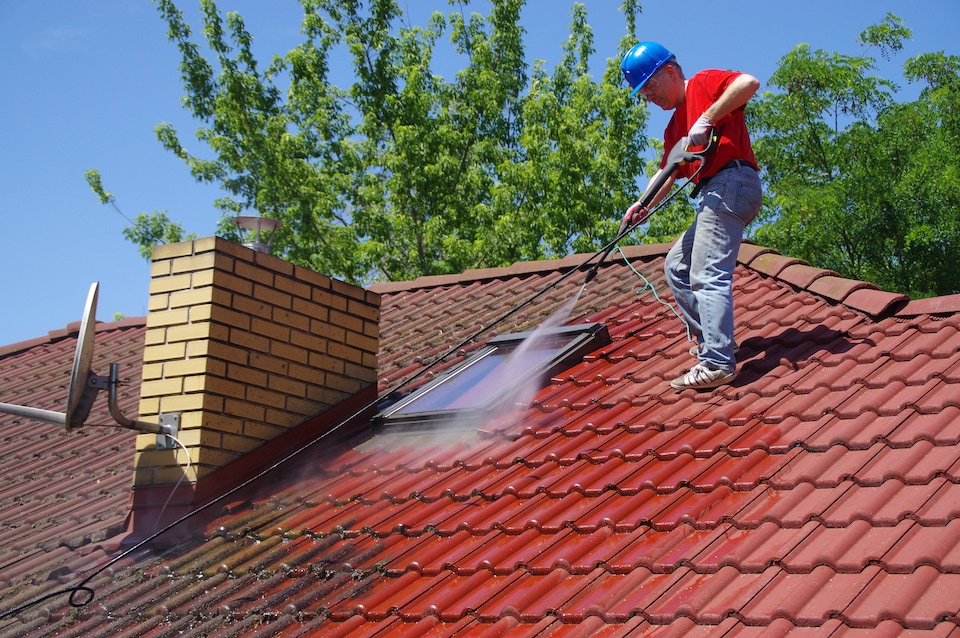Regular inspections are one of several elements that affect a tile roof’s lifetime. These inspections can identify minor problems before they develop into bigger ones, such as moss and algae growth.
The best way to prevent the growth of moss and algae on tile roofs is to clean them regularly. This can be done using a low-pressure power washer.
Clean the Roof Regularly
While tile roofs are one of the most durable roofing materials, they are still susceptible to wear and tear. Regular maintenance assists in preventing minor concerns from developing into larger ones that could shorten the lifespan of your tile roof.
Keeping your roof free from organic growth, such as moss and algae, is essential to protecting the tiles. These fungi grow best in moist, dark places and trap moisture underneath the tiles. This can cause the concrete to deteriorate, leading to leaks.
Maintaining proper ventilation is also essential for the longevity of your tile roof. Ensure that all vents are correctly protected from obstructions to promote proper airflow. This helps regulate temperature, reduce humidity, and minimize the risk of moisture damage. This can also reduce the risks of mold and mildew growth.
Inspect the Gutters Regularly
A tile roof’s lifespan depends on how often it’s cared for. If the roof isn’t inspected and maintained regularly, it can quickly develop problems, leading to significant damage and expense.
This is especially true of moss, which can cause the concrete tiles to crack or break. Regular inspections and cleanings can eliminate moss and other organic growth before it causes severe damage.
Gutters are also essential for water diverting from the roof and not pooling under the tiles. This can prevent water intrusion and serious structural issues, which is another reason to inspect the gutters regularly. A clean, functioning gutter system is critical for tile roof longevity.
Clean the Flashings Regularly
The flashings provide a waterproof barrier around the chimney, skylights, and vents. If the flashings are missing, loose, or damaged, they can allow water into the roof system, causing leaks and deterioration over time. Regular inspections and tile roof maintenance Reno can help identify these issues and ensure the flashings are properly sealed.
Moss and algae growth can also damage the tiles and lead to a loss of color vibrancy. Regular and non-abrasive cleaning tools can prevent this organic growth from forming on your tile roof.
It is also essential to check the roof after big storms. High winds can cause damage if the tiles are loose or not fastened securely. If the roof is inspected and maintained regularly, it can withstand most weather conditions and last for decades.
Inspect the Underlayment Regularly
The underlayment is often overlooked because it’s not visible after the roof installation. However, it significantly impacts the longevity of the tile roof.
If you see sagging or an uneven surface, it may indicate structural issues with the roof deck. You must repair any damage to ensure the underlayment adheres properly and prevents leaks.
Always use non-abrasive cleaning methods and solutions to avoid causing any damage. By limiting the accumulation of organic material that causes damage, regular cleaning can also assist in extending the lifespan of the concrete tiles. Also, ensure adequate ventilation to promote airflow and reduce the risk of moisture accumulation.
Inspect the Roof for Damage
If your tile roof has deteriorated or is experiencing damage, it should be inspected and repairs made promptly. A tile roof left unattended can lead to costly leaks and property damage.
Begin your inspection by walking outside your home and carefully examining the tiles for any apparent damage or aging. Check for shingle buckling, discoloration, or looseness. Also, look for granule loss, which indicates the shingles no longer protect your home from severe weather conditions.
Next, enter your attic and carefully examine the interior of your ceilings for signs of water damage. Look for stains, mildew, or musty smells. If you have a vented attic, ensure the vents are clear to promote proper airflow and reduce humidity.

















